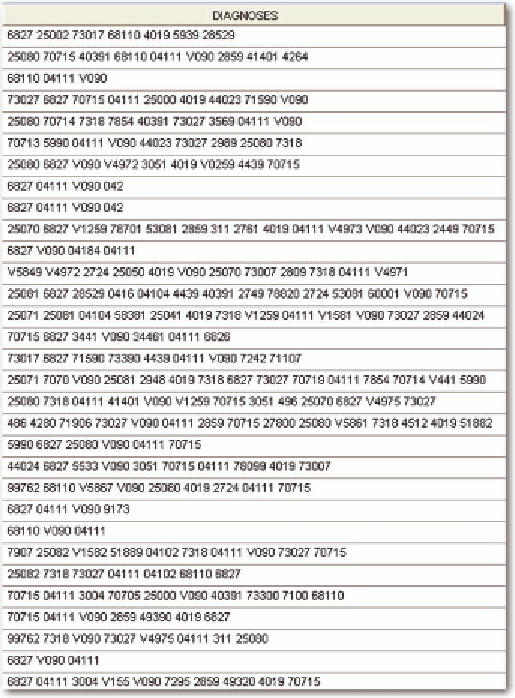Information Technology Reference
In-Depth Information
for osteomyelitis. Therefore, 681 has higher weight when determining the characteristics of the cluster.
In addition, the specific codes that appear are 682.2 (cellulitis in the trunk) and 682.5 (cellulitis in the
buttock), indicating that these patients are also characterized by the specific location of the condition.
These conditions are more likely to occur from sexual practices rather than from diabetes. This is in
contrast to Figure 25, which is more likely to have 682.7, or cellulitis in the foot.
Figure 27 shows the proportion of MRSA cases per diagnosis cluster; Figure 28 shows the proportion
per procedure cluster. As Figure 27 shows, clusters 6,7,9,19,20, and 23 have the highest rates of resistant
infection. Cluster 6 suggests foot ulcers and cellulitis that are commonly associated with diabetes; cluster
9 suggests nosocomial resistant infection from childbirth. Clusters 19, 20, and 23 suggest a community
acquired infection that was initially diagnosed as an insect bite.(Gorwitz et al., 2006) Cluster 7 appears
to be the result of male-on-male sexual practices.(Beck, 2008; Erskine, 2008) Because diagnoses cannot
distinguish between nosocomial and community acquired MRSA, diagnoses will not be sufficient to
predict the occurrence of nosocomial infection. Cluster 14, focused primarily on childbirth, has a very
low occurrence of MRSA, as do clusters 24 and 26. These two clusters are also focused on childbirth.
The fact that the occurrence is low indicates that prophylactic treatment is probably not necessary for
labor and delivery, nor is it necessary when treating the newborns.
Figure 25. Patients in cluster 6

Search WWH ::

Custom Search